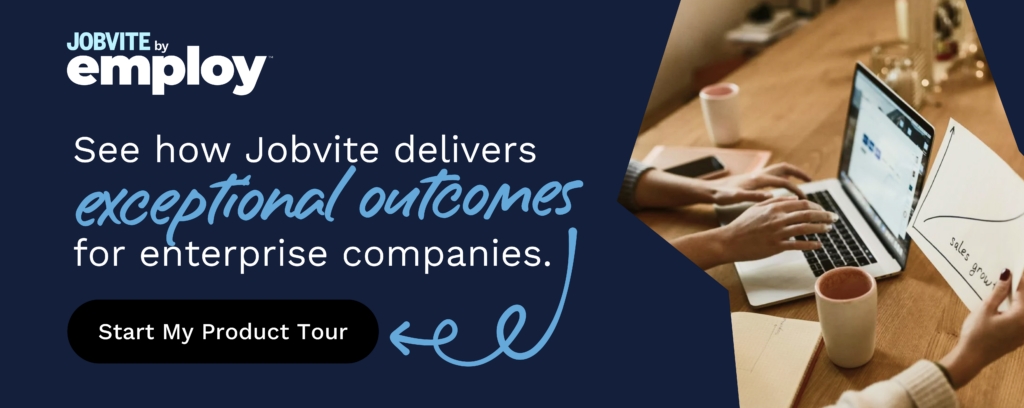Many people think that recruitment and talent acquisition are synonymous, but companies focused on smart talent acquisition know there’s a crucial difference between the two.
Recruitment and talent acquisition occur at different times — recruitment strategies focus on quick fixes, while talent acquisition focuses on developing a longer-term approach. Both approaches are important to consider, but recruitment is more tactical, while talent acquisition is more strategic.
In this guide, we’ll review how a basic understanding of talent acquisition and recruitment can go a long way in improving your enterprise’s hiring outcomes. Here’s what we’ll cover:
- Comparing employee recruitment and talent acquisition
- Should your company recruit or acquire talent?
- How to strengthen your talent acquisition approach
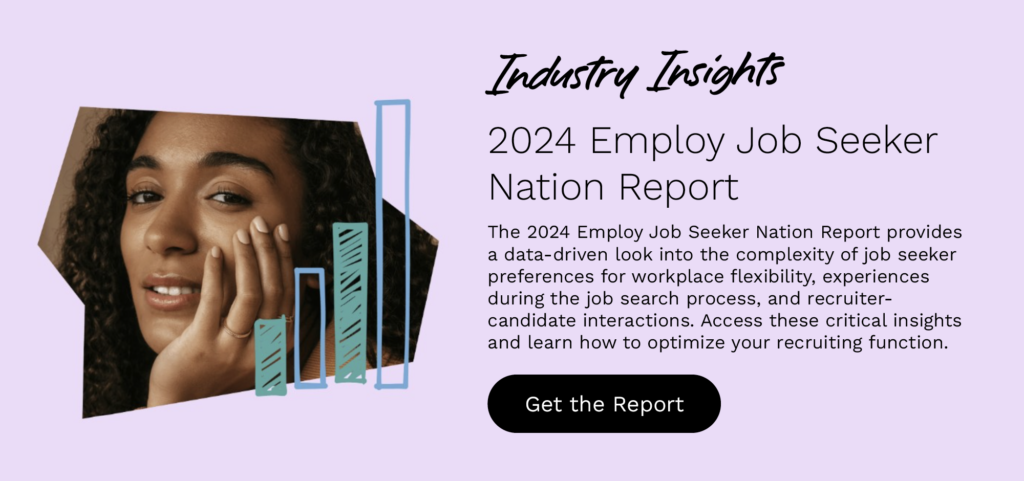
Comparing employee recruitment and talent acquisition
Recruitment is reactive, focusing on filling vacancies as efficiently as possible by selecting the best-fit candidate based on job requirements and the applicant’s skill set.
Talent acquisition, on the other hand, is an ongoing approach to finding your company’s top specialists, individual contributors, leaders, or future executives. It focuses on long-term human resources planning by investing time and resources in building relationships with potential candidates, promoting employer branding, and developing a talent pipeline for future organizational needs. This approach considers not only applicant skills and competencies but also potential fit within the company’s culture and long-term growth goals.
Let’s explore some more characteristics of talent acquisition and recruitment:
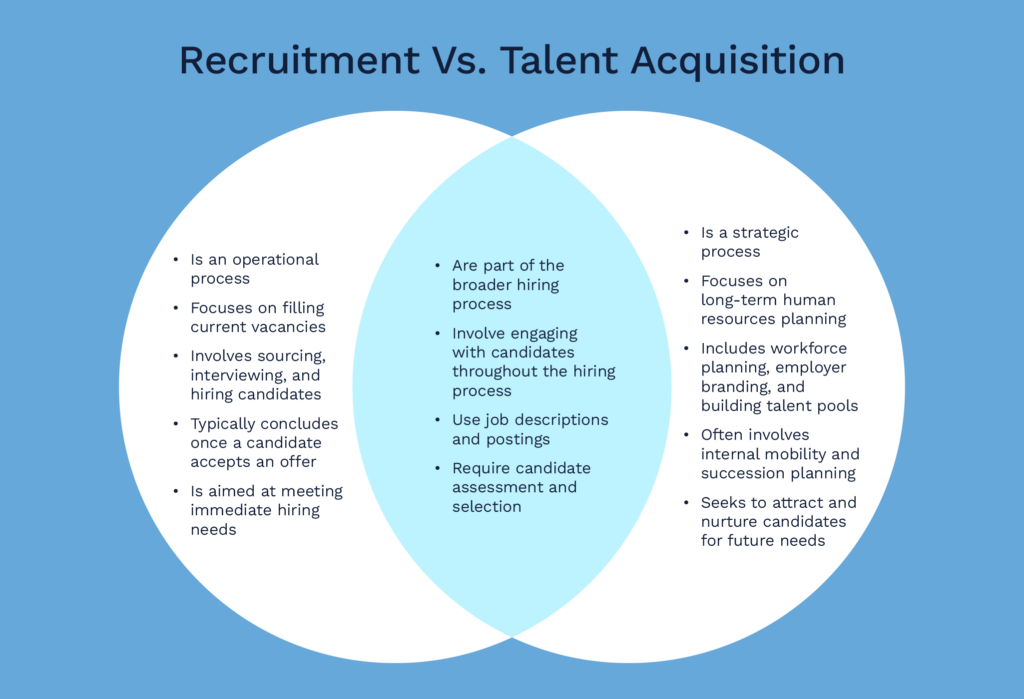
- Talent Acquisition:
- Is a strategic process
- Focuses on long-term human resources planning
- Includes workforce planning, employer branding, and building talent pools
- Often involves internal mobility and succession planning
- Seeks to attract and nurture candidates for future needs
- Recruitment:
- Operational process
- Focuses on filling current vacancies
- Involves sourcing, interviewing, and hiring candidates
- Typically concludes once a candidate accepts an offer
- Aimed at meeting immediate hiring needs
- Talent Acquisition and Recruitment:
- Are part of the broader hiring process
- Involve engaging with candidates throughout the hiring process
- Use job descriptions and postings
- Require candidate assessment and selection
The bottom line is, to execute a talent acquisition strategy, you need to identify, attract, and nurture potential hires proactively for future positions often before these positions become available. Niche markets, technology skills, highly specific experience, and leadership roles call for a thoughtful, long-term approach to talent acquisition, so ask yourself which positions will be difficult to fill when a vacancy or need arises.
Should your company recruit or acquire talent?
Some professionals may believe that every company in all industries should focus on talent acquisition rather than recruitment because acquiring talent typically builds a stronger company, fosters teamwork, and boosts productivity.
But remember, as an enterprise, you likely have extremely diverse hiring needs across your company and within certain departments, so you shouldn’t use a one-sided approach. These strategies can both be used intentionally in different circumstances.
Here are a few questions that can help your company decide whether to prioritize recruitment or talent acquisition:
- Do we have a turnover problem? If your enterprise experiences high turnover, you can transform hiring by building a more robust talent pool through strategic talent acquisition. But if you only hire a few people each year and have low turnover, your focus is likely more on recruitment.
- Is our industry experiencing rapid growth or innovation? As markets evolve and new skills become more important, you’ll need to adapt your hiring practices to keep up. For example, in manufacturing, a push towards green technology leads to a greater need for reskilling and hiring non-traditional backgrounds, such as environmental science.
- What is the competitive landscape for talent in our industry? If top talent is scarce in your industry, taking a long-term talent acquisition approach can help you stand out as a leading employer.
- What are our business goals? If your most pressing goals are aligned with addressing immediate needs versus long-haul growth, perhaps recruitment should be your priority.
Whether you prioritize recruitment or talent acquisition, having a passive talent pool ready will save you time and give you a leg up on your competition. Use your applicant tracking system (ATS) to note interested applicants who aren’t the best fit right now, but could be a promising candidate in the future. Then, when it comes time to fill roles, you have easy access to people who have already expressed interest in your enterprise.
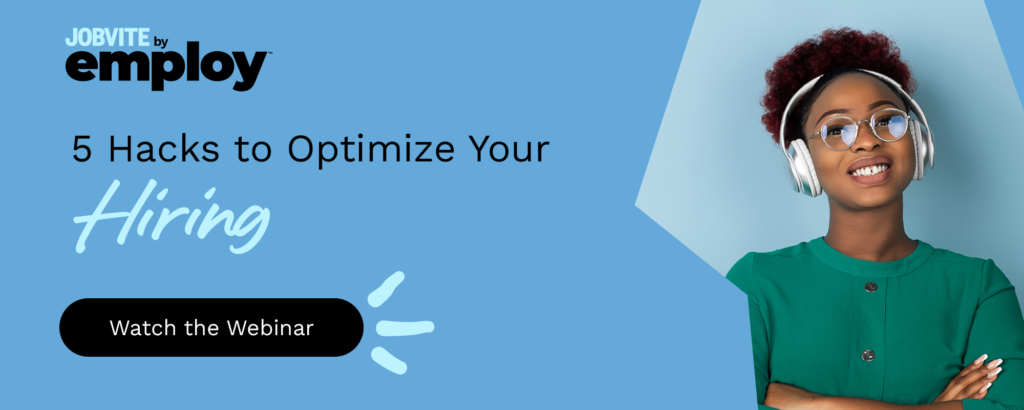
How to strengthen your talent acquisition approach
Attracting the best and brightest employees to your company is a continuous process of networking and engaging top talent. Your talent acquisition function can be one of the drivers of candidate relationship management success, allowing your company to thrive.
If you’ve been focusing on recruitment, try these tips to help your talent team zoom out and look at the big picture:
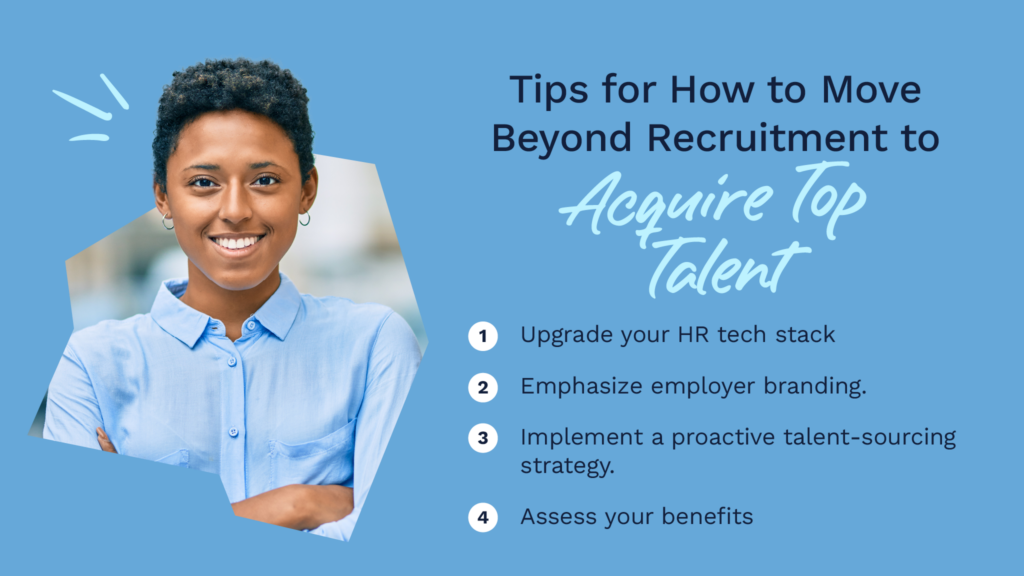
- Upgrade your HR tech stack. Invest in an applicant tracking system (ATS) and a candidate relationship management system (CRM) to nurture candidates at scale and build a robust talent pool.
- Emphasize employer branding. Is your company known for its corporate social responsibility initiatives or social culture? Play to your unique strengths, while developing a talent acquisition strategy to stand out.
- Implement a proactive talent sourcing strategy. As previously mentioned, keeping a passive talent pool ensures you always have candidates that you can engage to influence your long-term talent strategies.
- Assess your benefits. Whether it’s implementing DEI initiatives, offering competitive compensation and benefits, or examining your internal mobility programs, understand what makes applicants want to join your enterprise and what you can implement in the long term to improve your hiring potential.
As you start putting this information together, it can be helpful to structure important information in a SWOT format. By listing your strengths, weaknesses, opportunities, and threats, you can understand the internal and external factors impacting your talent acquisition success. Take a look at this example template you can use to get started:
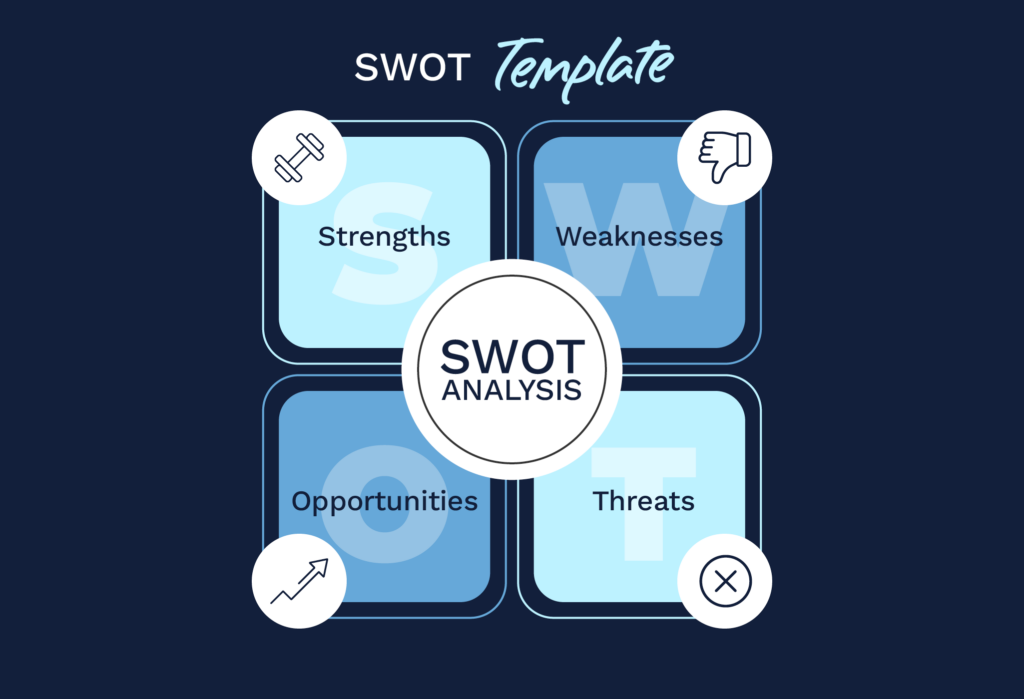
How to jumpstart your talent acquisition efforts
By taking a purposeful look into your enterprise’s strengths for potential candidates, you can craft a meaningful talent acquisition strategy to serve your entire organization and align to your business strategies. However, navigating such a big task can seem daunting. Don’t worry — we’re here to help you get started.
Jobvite’s EVOLVE Talent Acquisition Framework assesses your organization’s maturity in 17 process areas across the three pillars of talent acquisition: recruitment marketing, applicant management, and talent acquisition operations.
Our framework helps you optimize not just the process areas, but also the connection points between process areas to see real business results. Based on your current maturity level in the identified process areas, we’ll provide tailored action plans to evolve your processes, people, and technologies and track your progress.
